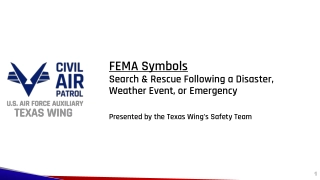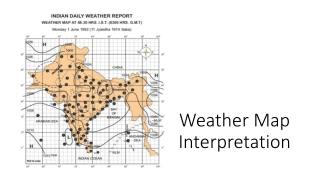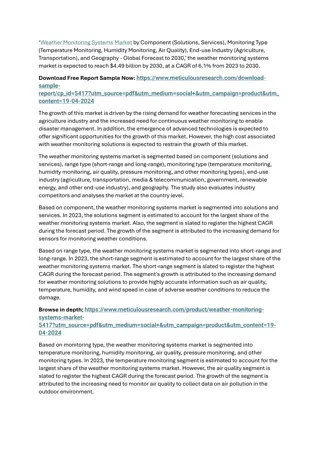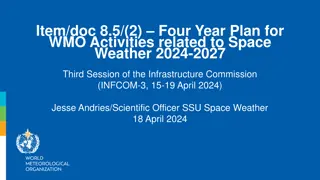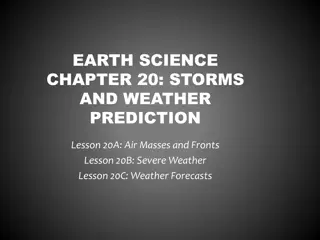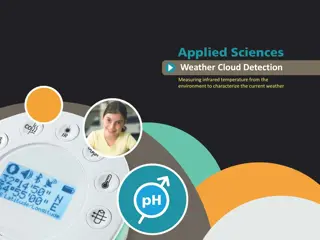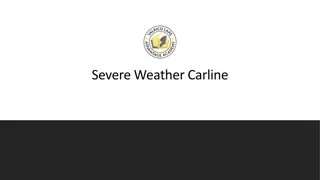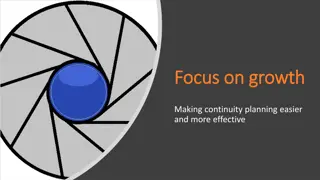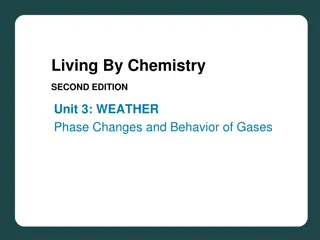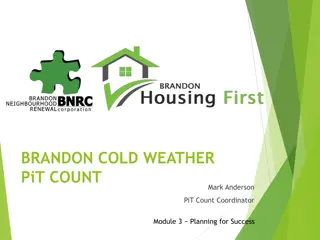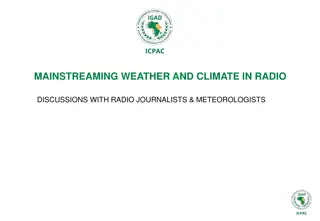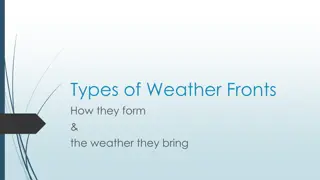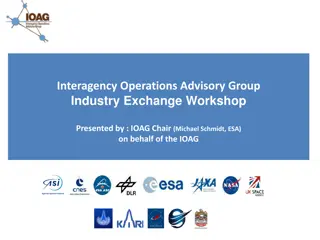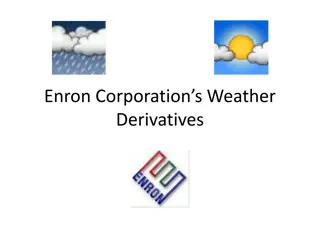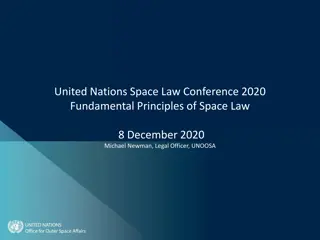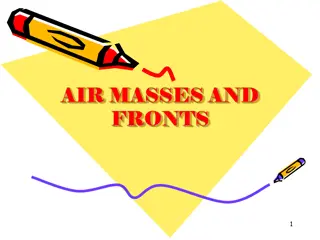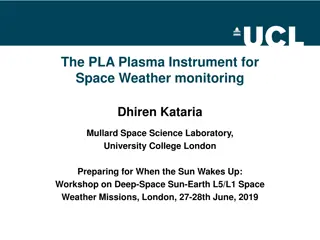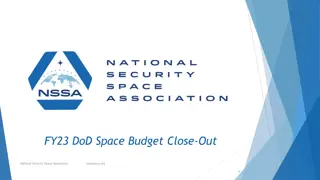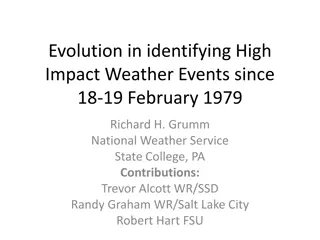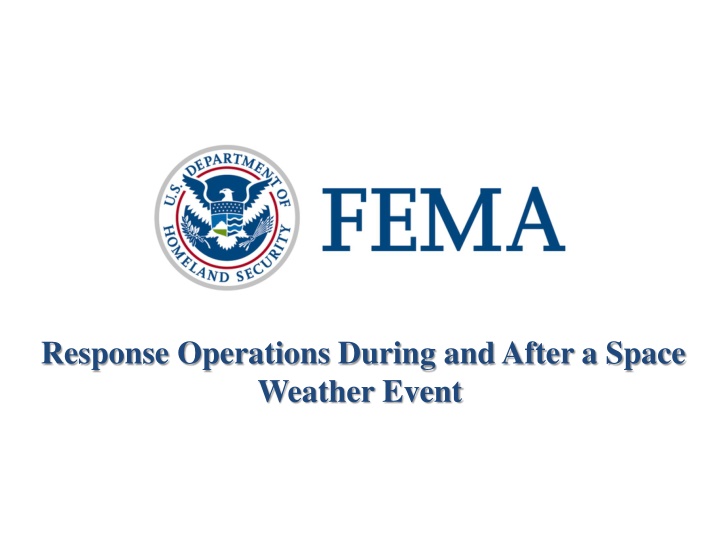
Space Weather Response Operations and FEMA Mission
This content provides insights into response operations during and after a space weather event, highlighting FEMA's mission to support citizens and first responders in preparing for, protecting against, and recovering from all hazards. It also discusses notification frameworks, space weather alerts, and FEMA's network of operations and coordination centers.
Download Presentation

Please find below an Image/Link to download the presentation.
The content on the website is provided AS IS for your information and personal use only. It may not be sold, licensed, or shared on other websites without obtaining consent from the author. If you encounter any issues during the download, it is possible that the publisher has removed the file from their server.
You are allowed to download the files provided on this website for personal or commercial use, subject to the condition that they are used lawfully. All files are the property of their respective owners.
The content on the website is provided AS IS for your information and personal use only. It may not be sold, licensed, or shared on other websites without obtaining consent from the author.
E N D
Presentation Transcript
Response Operations During and After a Space Weather Event 3 March 2011
FEMAs Mission FEMA s mission is to support our citizens and first responders to ensure that as a nation we work together to build, sustain, and improve our capability to prepare for, protect against, respond to, recover from, and mitigate ALL HAZARDS. 2
Notification Framework When?: If a space weather event will likely Directly or indirectly cause or exacerbate a major disaster or emergency Interfere with or seriously degrade FEMA s response & recovery capability Create political, public, or media pressure / expectation for FEMA action Why?: Provide broad, timely space weather situational awareness across the agency Answer the So what? for potentially high-concern / high-impact events Use plain language messaging to briefly outline possible or probable impacts; expected duration 4
Space Weather Alerts and Notifications Alert Conference Call Notification Action Subscriber Email Alerts FOC Notify Leadership G 5 FAOC WestENS to Watches Solar Radiation Storms Geomagnetic Storms S 4 G 4 FAOC East NAWAS / WAWAS S 5, G 5 only R 5 Radio Blackouts S 3 G 3 R 2 G 2 S 2 No notifications recommended at these levels S 1 G 1 5
FEMAs Network of Operations & Coordination Centers National Watch Center/National Response Coordination Center Wash, D.C. FEMA Operations Center Mt. Weather, VA Response Watch Center FEMA Alternate Operations Center East *Thomasville, GA FEMA Alternate Operations Center West **Denver, CO Regional Response Coordination Centers Region Watch Centers R1 - Boston R2 - New York R3 - Philadelphia R4 - Atlanta R5 - Chicago R6 - Denton R7 - Kansas City R8 - Denver R9 - Bothell R10 - Oakland MERS Operations Centers Bothell, WA Denton, TX Denver, CO** Frederick, MD Maynard, MA Thomasville, GA* 6
Impact to Critical Communications When communications fail, the mission can fail, often with tragic results Public Safety emergency responders need effective communications to do their jobs in any environment haiti-telcom 7
Assessing the Risk Storms (R, S, and G) at levels 1-3 on the NOAA Space Weather Scales have little or no impact on normal operational communications or systems. 1859 Carrington-Hodgson superstorm was the largest in the last 500 years and such storms appear to occur roughly every 500-600 years. Destructive superstorms may occur roughly once in every 100 years. It has been 90 years since the Great Storm of 1921. The North American Power Grid is vulnerable but at least some electric utility providers are implementing mitigation and response measures. The next solar maximum will occur in 2013 and is expected to be the weakest cycle since the 1930s. The largest solar superstorms have occurred in less active solar cycles. (Less active cycles do not imply greater storms). 8
Recovery Custom extra-high voltage (EHV) transformers for the electric power grid take 12-24 months to produce. Total replacement will take years. Estimates for national economic recovery are between 4 and 10 years. Line-of-sight public safety and commercial radio (HF, VHF, UHF, microwave) WILL work if power can be supplied to systems and receivers. HF radio can provide communications over extended distances in the absence of other means, if power is available. Loss of key infrastructure for extended periods due to the cascading effects from a space weather event (or other disturbance) could lead to a lack of food, given low inventories and reliance on just-in-time delivery, loss of basic transportation, inability to pump fuel, and loss of refrigeration (National Academy of Sciences, 2008) 9
Conclusion Diversify Redundant and resilient satellite, radio, and terrestrial communications systems can provide critical communications throughout a superstorm. HF radio could be key to long term critical communications. Plan Know what communications systems will work and when they will work. Know where and how to get fuel, water, and other consumables. Power, Power, Power Have backup power available and don t forget that generators need maintenance. If you can, consider renewable sources such as solar, wind, or fuel cells. Advocate Educate the public to be prepared for all emergencies. Many solutions to extreme solar weather also solve for other hazards. 10

